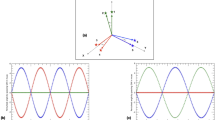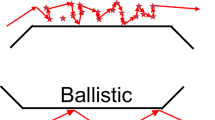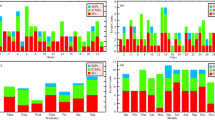Abstract
AN important consideration when designing an array of aerials to sample the diffraction pattern of a radio wave reflected from the ionosphere is to ensure that the results are not affected by mutual coupling. Signals reradiated from one aerial may be received by another, and this could affect the measured characteristics of the diffraction pattern. Any subsequent measurements (for example, of ionospheric drifts) would also be affected.
This is a preview of subscription content, access via your institution
Access options
Subscribe to this journal
Receive 51 print issues and online access
$199.00 per year
only $3.90 per issue
Buy this article
- Purchase on Springer Link
- Instant access to full article PDF
Prices may be subject to local taxes which are calculated during checkout
Similar content being viewed by others
References
Briggs, B. H., Elford, W. G., Felgate, D. G., Golley, M. G., Rossiter, D. E., Smith, J. W., Nature, 223, 1321 (1969).
Golley, M. G., and Rossiter, D. E., J. Atmos. Terr. Phys. (in the press).
Briggs, B. H., Phillips, G. J., and Shinn, D. H., Proc. Phys. Soc., B163, 106 (1950).
Phillips, G. J., and Spencer, M., Proc. Phys. Soc., B68, 481 (1955).
Author information
Authors and Affiliations
Rights and permissions
About this article
Cite this article
ROSSITER, D. Coupling between Aerials used for measuring Ionospheric Drifts. Nature 228, 1299–1300 (1970). https://doi.org/10.1038/2281299b0
Received:
Issue Date:
DOI: https://doi.org/10.1038/2281299b0
This article is cited by
-
Polarization of Extensive Air Shower Emission at 6 MHz
Nature (1972)
Comments
By submitting a comment you agree to abide by our Terms and Community Guidelines. If you find something abusive or that does not comply with our terms or guidelines please flag it as inappropriate.



